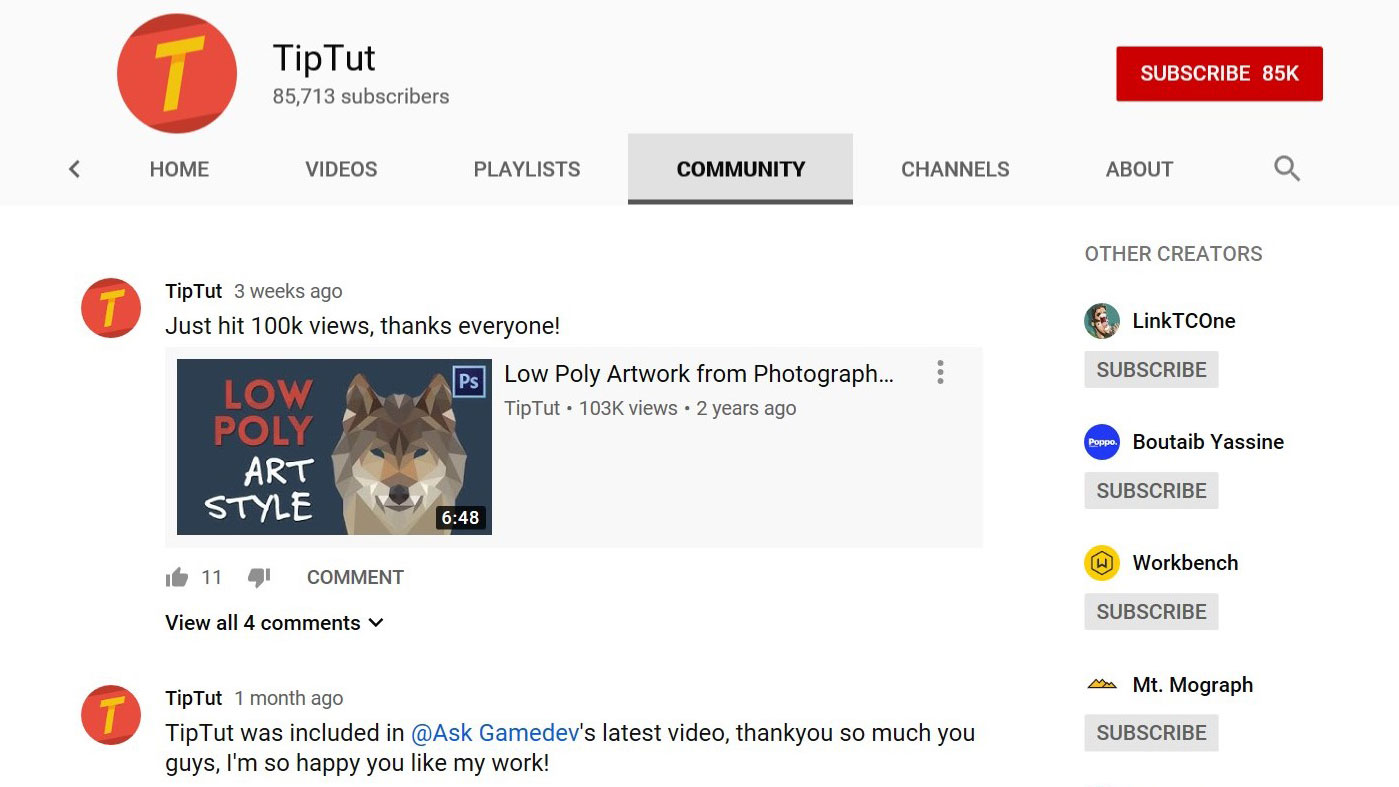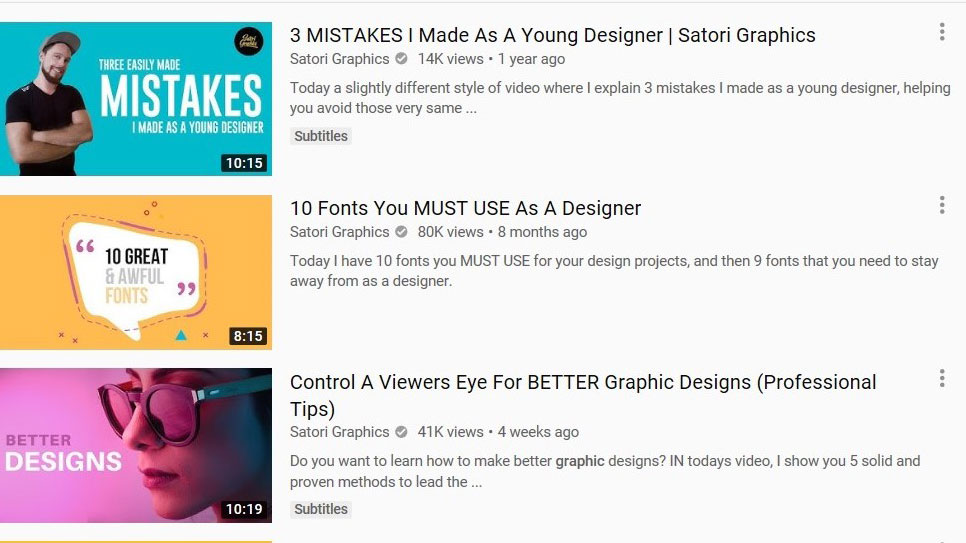How to become a YouTube sensation
Harness YouTube’s huge potential to share your creative content, grow your audience and get more work.
![how to become a youtube sensation [Image: Gerd Altmann on Pixabay]](https://cdn.mos.cms.futurecdn.net/poawm24BaFFWgqGztEZgBZ.jpg)
Whether you’re demonstrating the finer points of illustration or handholding viewers through a UI design tutorial, YouTube offers the perfect platform for sharing your talents with the world – and with 1.9 billion logged in monthly users, we really do mean the world. Over half of YouTube visitors use the site to work out how to do things they’ve not done before, so making your own videos is a great way to position yourself as an expert in your field, sell your work and bring in more clients.
But how do you compete with the millions of other videos on the ever-growing behemoth that is YouTube? True, you could choose an alternative platform like Vimeo and access a smaller, niche audience. But you'll probably want more than the basic membership, which will cost you money (YouTube is free) and you may not appear high in search results, as Google favours YouTube videos.
Then there's Instagram's IGTV, which launched in 2018 with huge promise but lags way behind YouTube, especially if you want to publish high quality, in-depth content and access viewers with longer attention spans.
So, aside from getting the best video editing software, how can you make it big on YouTube, maximise your views and promote your work? Read on for some top tips from creatives doing just that …
01. Find your style
Your unique style is what people will come back for. Think about your target audience and strike a balance between a style that reflects your personality and the aims/theme of your content.
According to Matt Fryer from TipTut, a tutorials, reviews and resources channel with 85,000 subscribers, succeeding on the platform comes down to having a unique take, approach, personality or skill set.
"Plenty of people make tutorials on YouTube, most of them suffer from poor production quality, lack of engaging personality from the presenter, or simply a lack of knowledge on the subject matter," he says.
Get the Creative Bloq Newsletter
Daily design news, reviews, how-tos and more, as picked by the editors.
Full stack designer Jesse Showalter puts his 69,000 subscribers down to staying true to who he is and what his users want: "People connect with my high energy mixed with level of encouragement. I try to motivate and encourage as well as inform and equip."
02. Choose the right length
How long (or short) are the most successful videos? Martin Perhiniak’s channel Yes I’m a Designer has 174, 000 subscribers and his most viewed video (above), which has been watched over 2.3 million times) is 40 minutes long. "In the case of educational videos, longer videos will attract more views as people will expect a more thorough explanation and more value," says Perhiniak.
Fryer believes the ideal length depends on the subject matter."I've had better results splitting longer videos into series. Around 15–20 minutes works best for most subject matters," he says. "But," he continues, "the real answer is: as short as possible without skipping key information." If a video is too short, people can feel short-changed or miss vital parts of the process.
Also bear in mind that 70 per cent of time spent on YouTube is watching content that the YouTube algorithm recommends. The algorithm prefers longer videos to keep people on the platform, so the longer you can keep users engaged, the better it is for your exposure.
03. Stick to a schedule
Standing out from the YouTube crowd is as much about quantity as it is quality. Post less and you’ll grow more slowly. Be clear about the schedule you’re aiming for, be consistent with posting and subscribers will know what to expect.
According to Perhiniak, "Frequent videos will help to engage subscribers and bring in new viewers. The more videos you publish the higher the chance one of them will get picked up by the algorithm and get featured by YouTube."
Batch recording and scheduling videos is crucial if you want to publish videos frequently and consistently, says Perhiniak. "TubeBuddy is a great extension that helps doing batch editing, which came in handy many times during our 365 Days of Creativity marathon [above]."
04. Interact, interact, interact

To grow views and followers, you need to build an interactive community around your content. "Try to be as personal as possible and respond to comments, queries, etc, inside and outside of YouTube," advises Fryer.
Calls to action encourage people to engage and it pays to be bold. "Ask them questions, tell them to comment and like the video if they find it useful," says Perhiniak. "In some cases, it is better to pick a controversial topic than something safe as it will get more engagement, but avoid click-bait videos. These can bring in a lot of views but won't help to grow your channel."
05. Shout about your business
If people know you’re an expert in your field, they’ll follow you for trusted content that’s backed up by the knowledge you’re brilliant at what you do. So, make sure you tell people how qualified you are.
"One thing that I believe differentiates me," says Perhiniak, "is that I have been teaching as an Adobe Certified Instructor around the world for over 10 years and that I have been also actively working as a graphic designer and illustrator for companies like Disney and Nickelodeon."
Remember, too, that you’re a business: "I include reminders about my shop at the end of a video if that particular drawing is available to buy there,’ says Baylee Jae Brazeau, who has over 1.1 million subscribers. "The entire video works as subtle advertising, so I try to keep mentions of my shop brief."
Just because you're mentioning your business though, doesn't mean it has to feel like a hard sell. "If you do vlog-style content, promoting sales of your own art products comes quite naturally without feeling like you're forcing a sales pitch," says Brazeau. "People see me designing products, ordering them, unboxing them, etc. Not only do they enjoy seeing the process, it doubles as advertising."
06. Promote your channel via other social media
A photo posted by @baylee_jae on Feb 28, 2019 at 8:19am PST
Being innovative in the way you use other channels like Facebook and Twitter can have a dramatic impact on your stats. When creating a new video tutorial, Fryer produces additional marketing materials, including motion graphics and thumbnails, that can then be used to easily promote the video. Effective hashtags will extend your content’s reach and draw in new followers.
Don’t spread yourself thin – think which channels best suit your audience. Most people find a Facebook presence invaluable; in addition to that, your content may be better suited to promotion on image-based channels like Instagram than, say, Twitter.
07. Consider thumbnails and SEO

What gives your video click appeal? Graphic designer Thomas Cargill, whose channel Satori Graphics has 205, 000 subscribers, says that "you need to make sure the thumbnail and title is relevant to your niche, and spikes interest and curiosity". It should be the right size, use a great image and include the title in a clear, standout font. You could also brand it to be immediately recognisable amongst all the other thumbnails.
"When you have a video that gets both a lot of clicks and a good watch time metric, the YouTube algorithm will promote your video more and more," says Cargill. "SEO is still important, but not as important as it was two plus years ago, and that involves having keyword-friendly titles, tags and descriptions."
Fryer adds: "If you don’t deliver decent content, those viewers won’t stick around. A combination of topical, attractive titles, and high quality content often yields the best results – for example, see our Intro to Motion Graphics series."
08. Be patient, and enjoy the process
For Cargill, it took several months to get his first 100 subscribers and he didn’t make any real revenue until after 18 months. His advice is to, "be patient and enjoy the process of making videos and providing content to your audience".
There are no shortcuts to getting views. "Each time you make a video you have to convince your audience to watch it by making it quality, informative and appealing," says Fryer. "Expecting a certain level of commitment from your audience is egotistical and will set yourself up for failure. Work hard, work often, make yourself relevant."
The final word comes from Showalter: "Do it because you love it, do it because you want to help people. Don’t do it to become rich, famous, or feel validated by others. The people that 'make it big' are usually the ones that have been 'making it small' for a long time. Just be you and be you consistently."
Read more:

Thank you for reading 5 articles this month* Join now for unlimited access
Enjoy your first month for just £1 / $1 / €1
*Read 5 free articles per month without a subscription

Join now for unlimited access
Try first month for just £1 / $1 / €1
